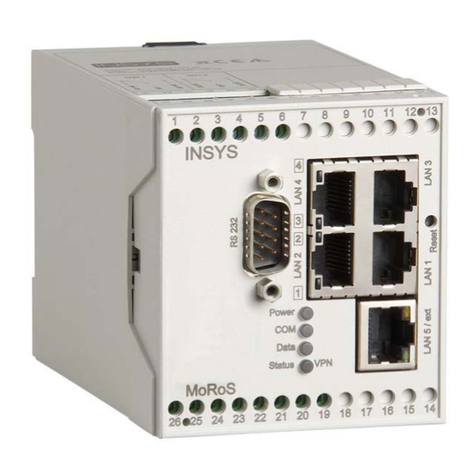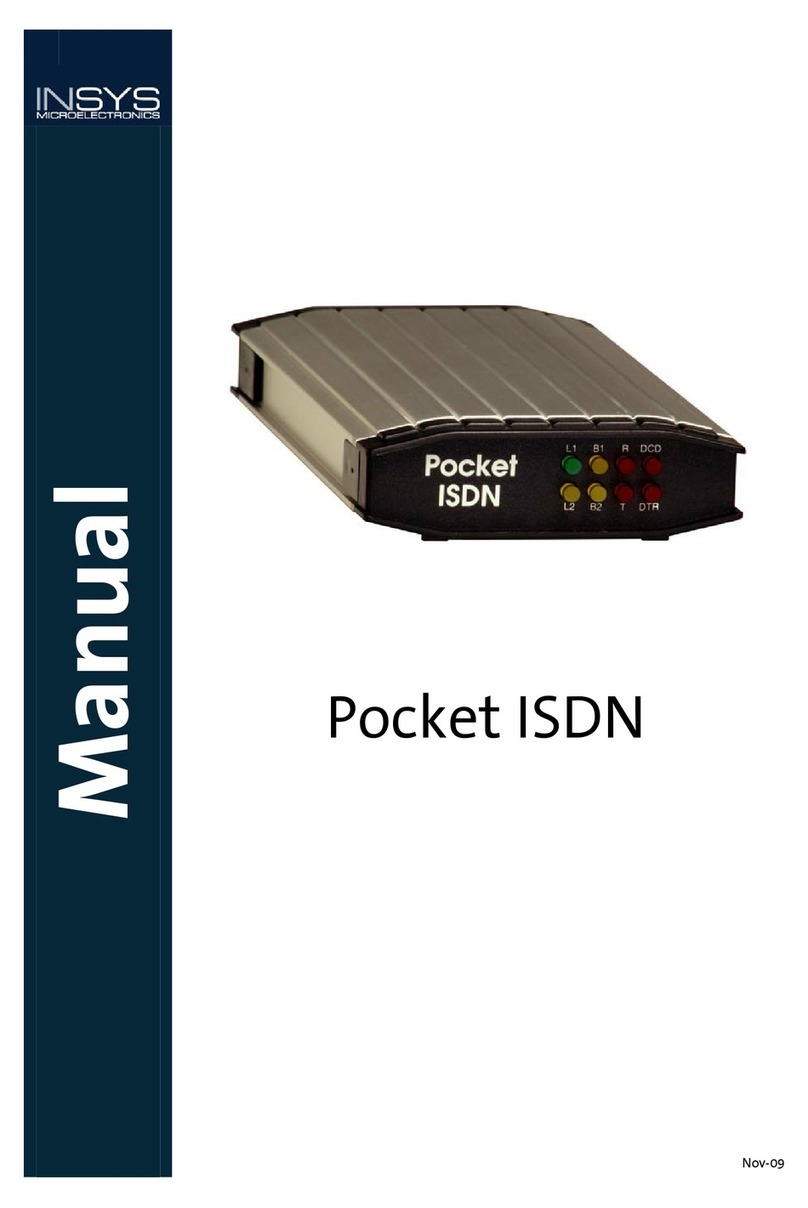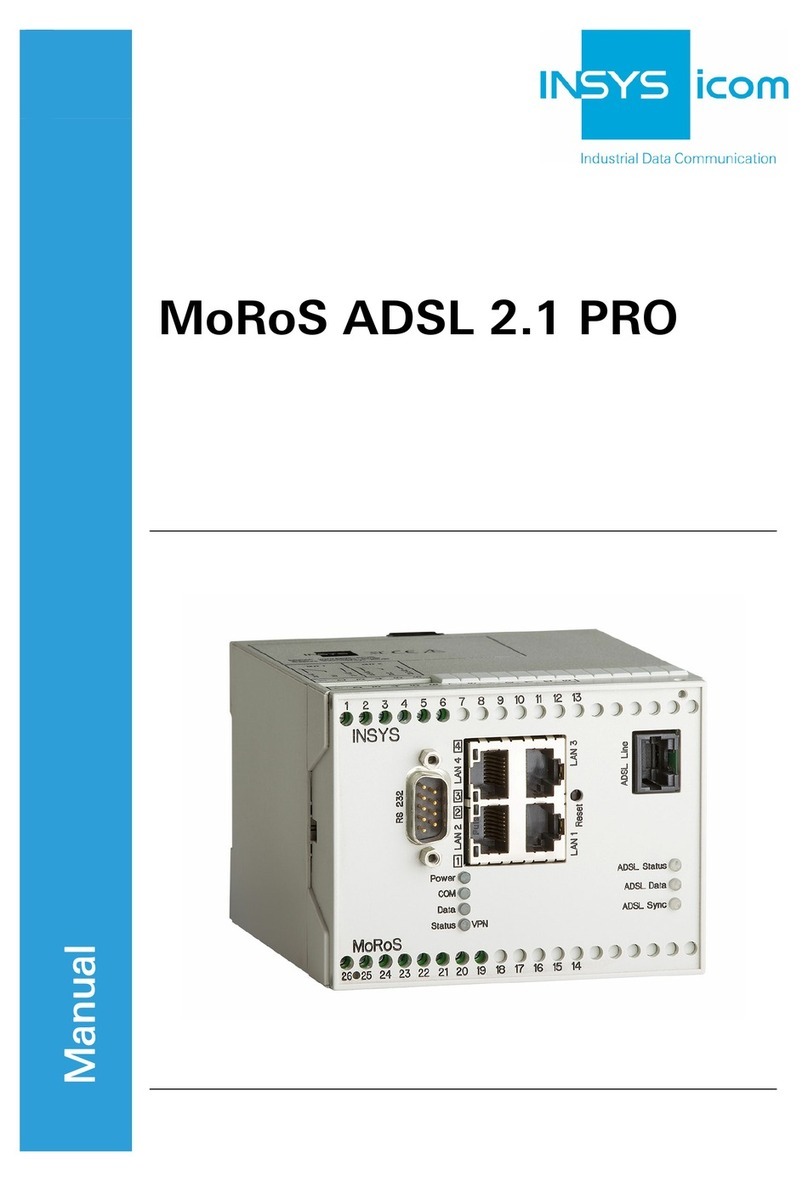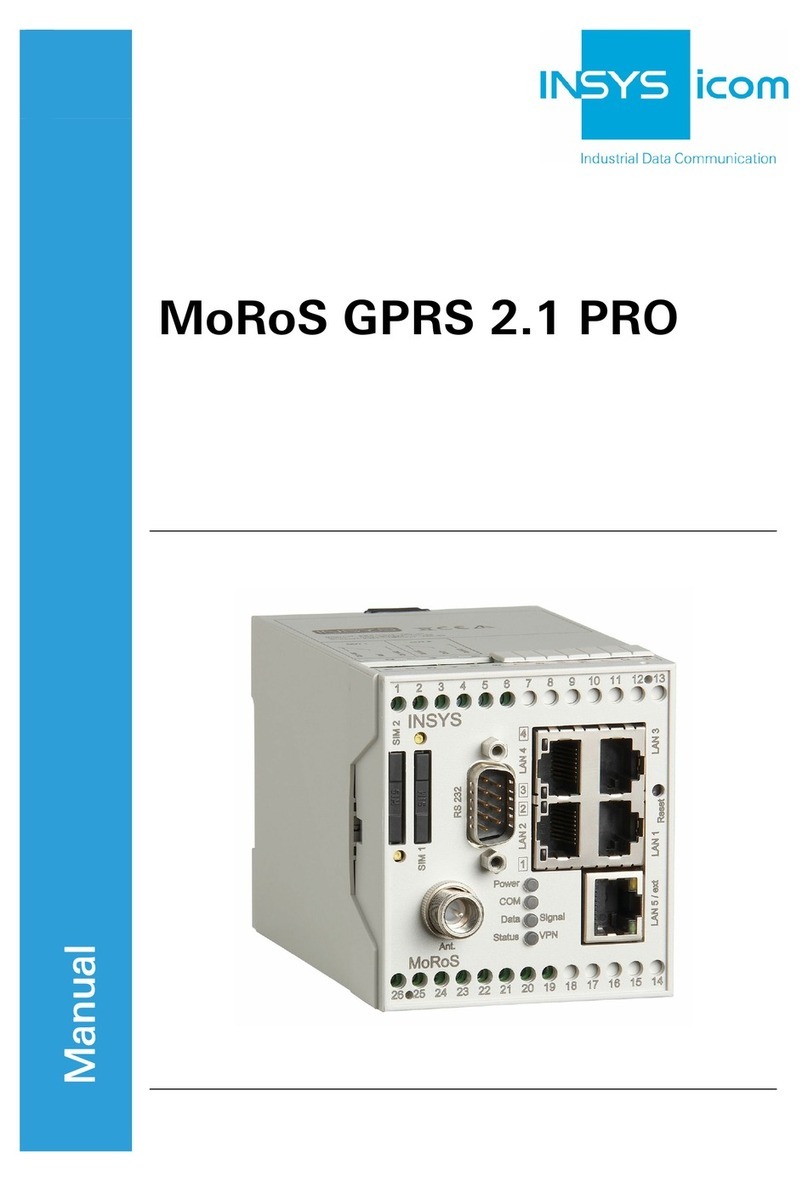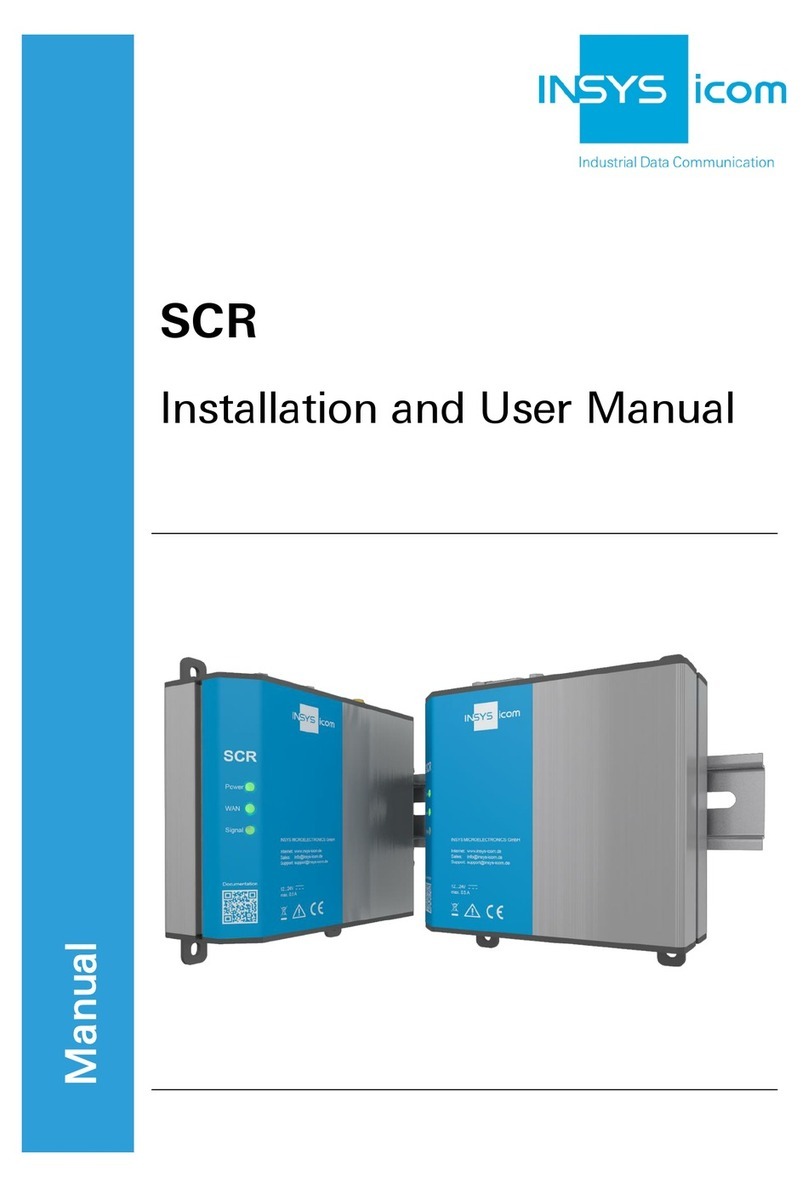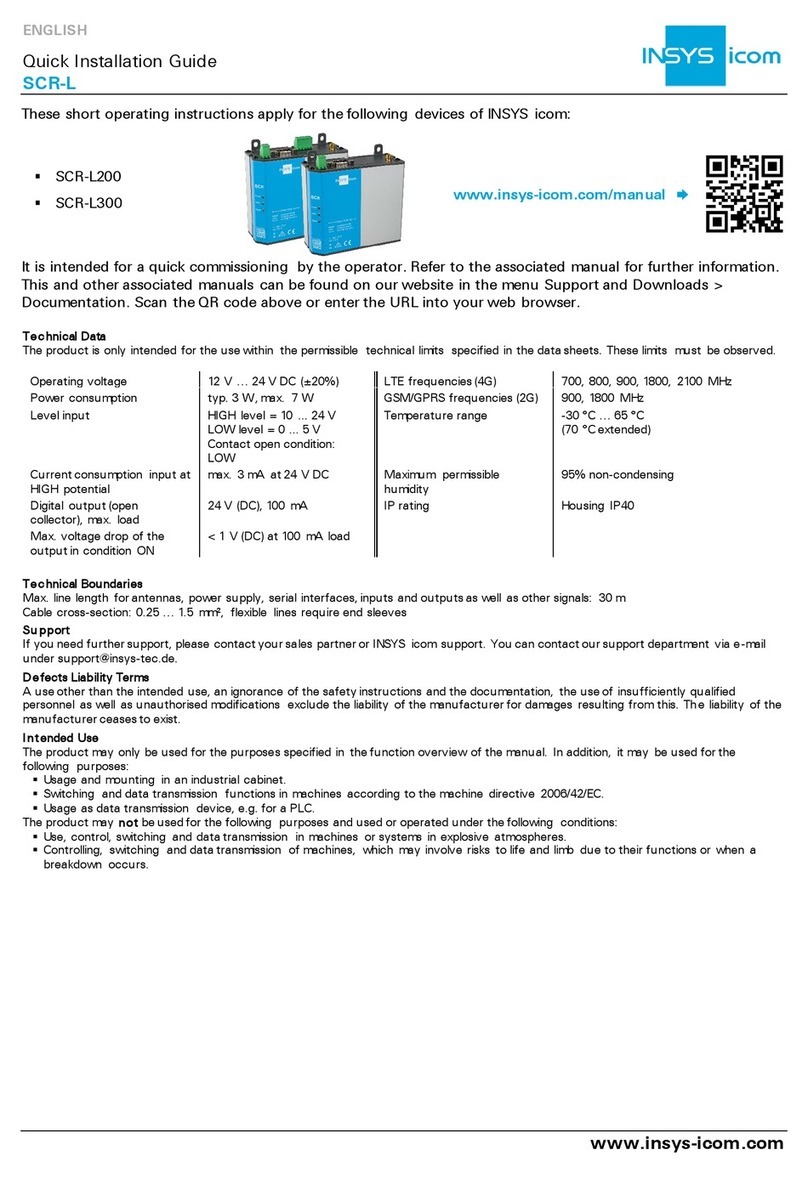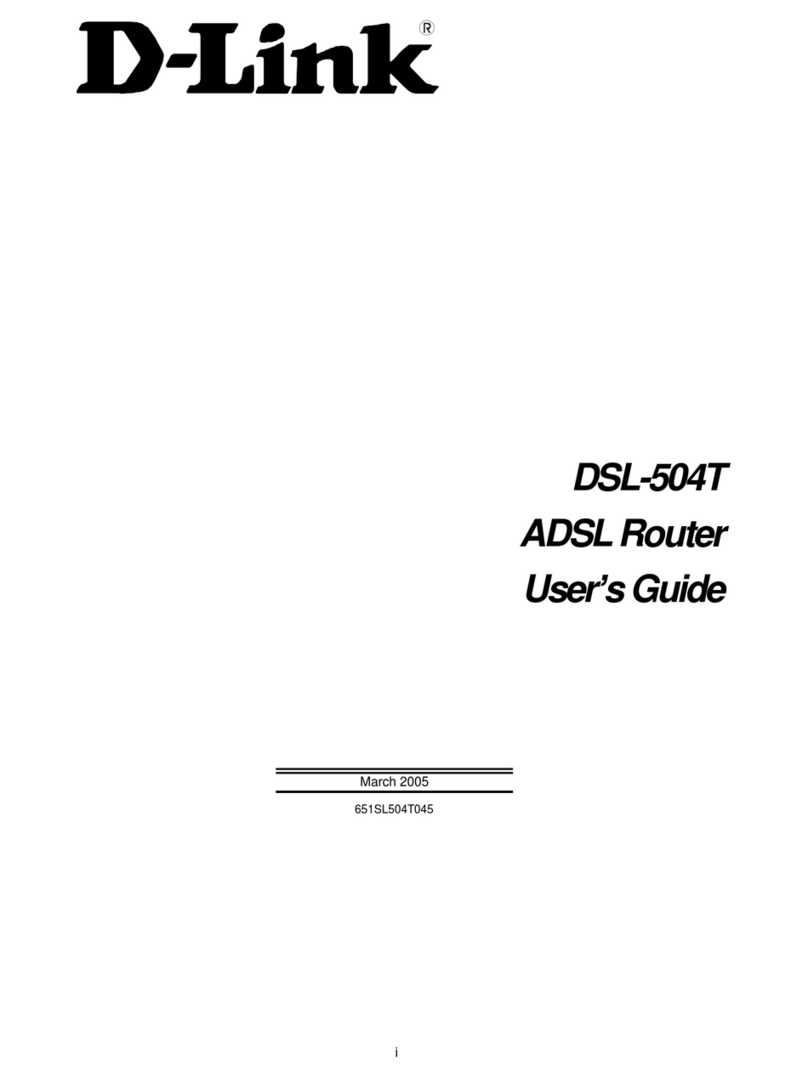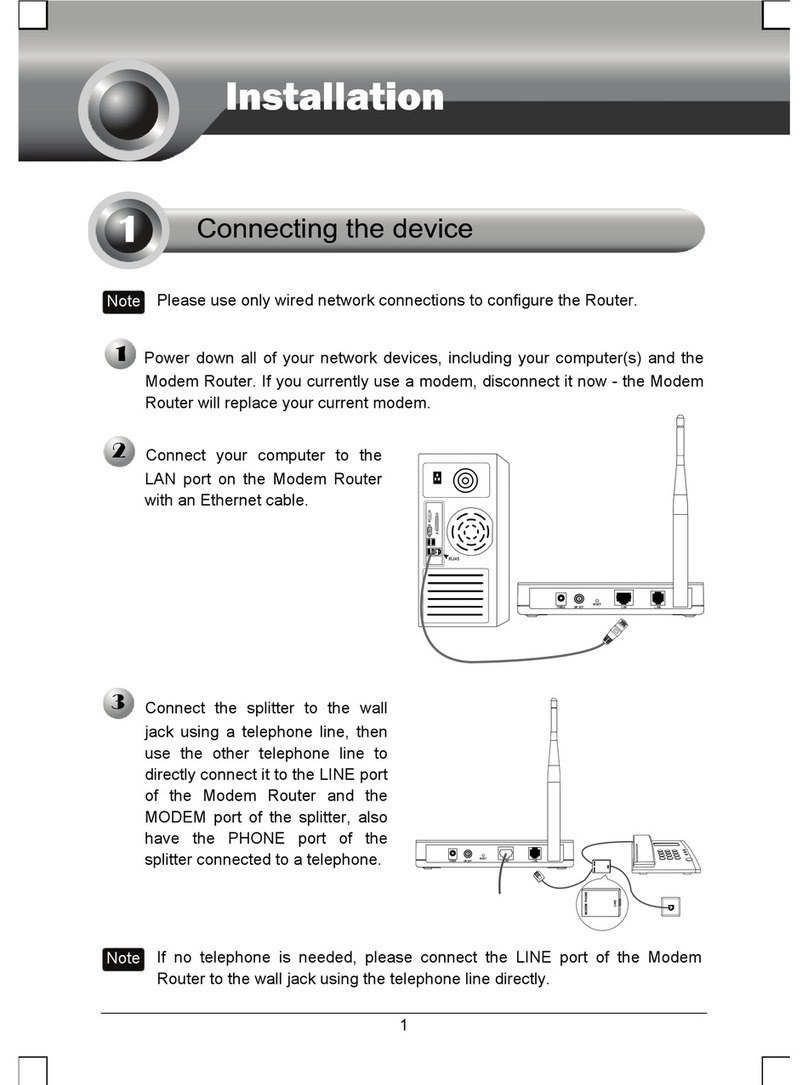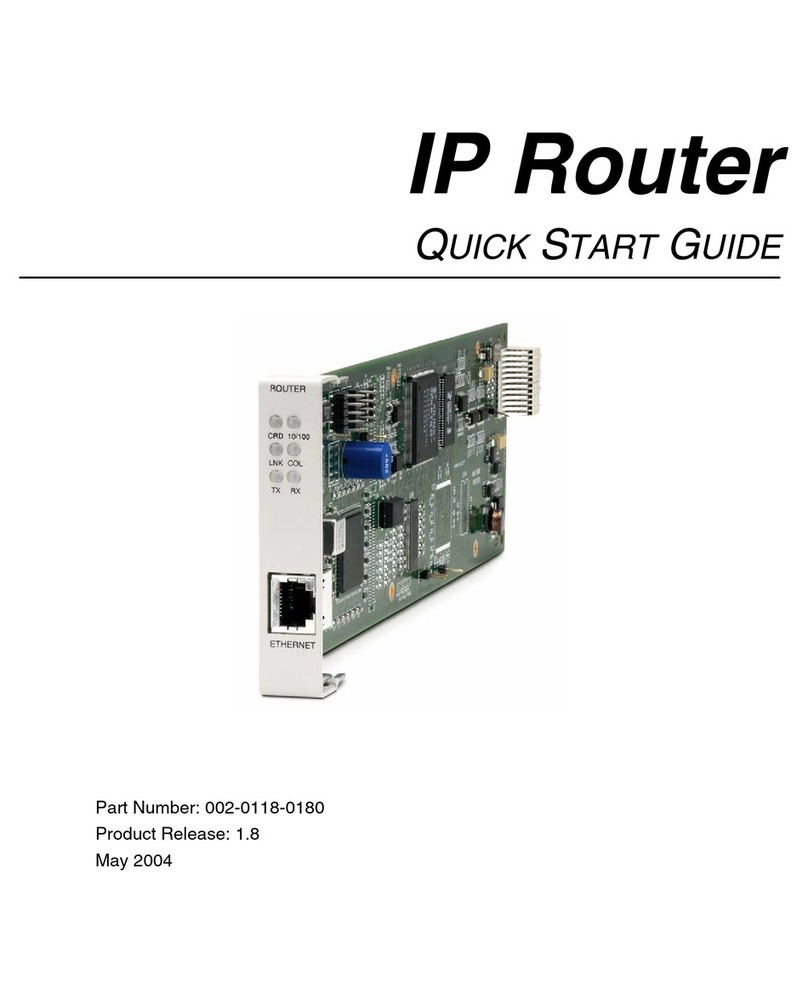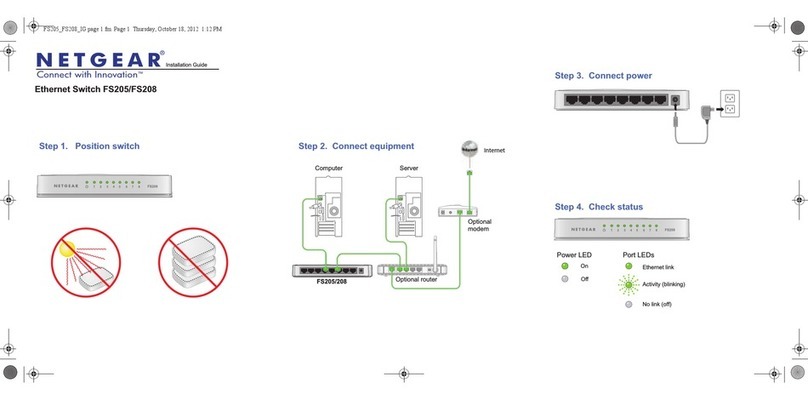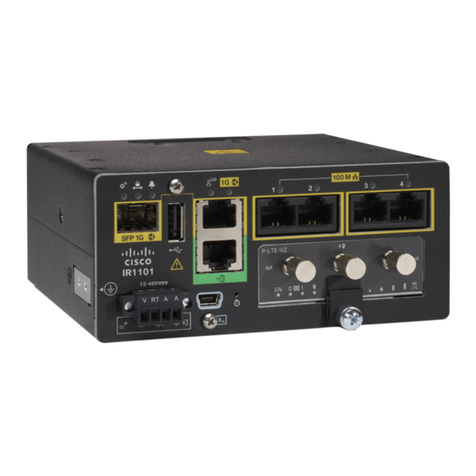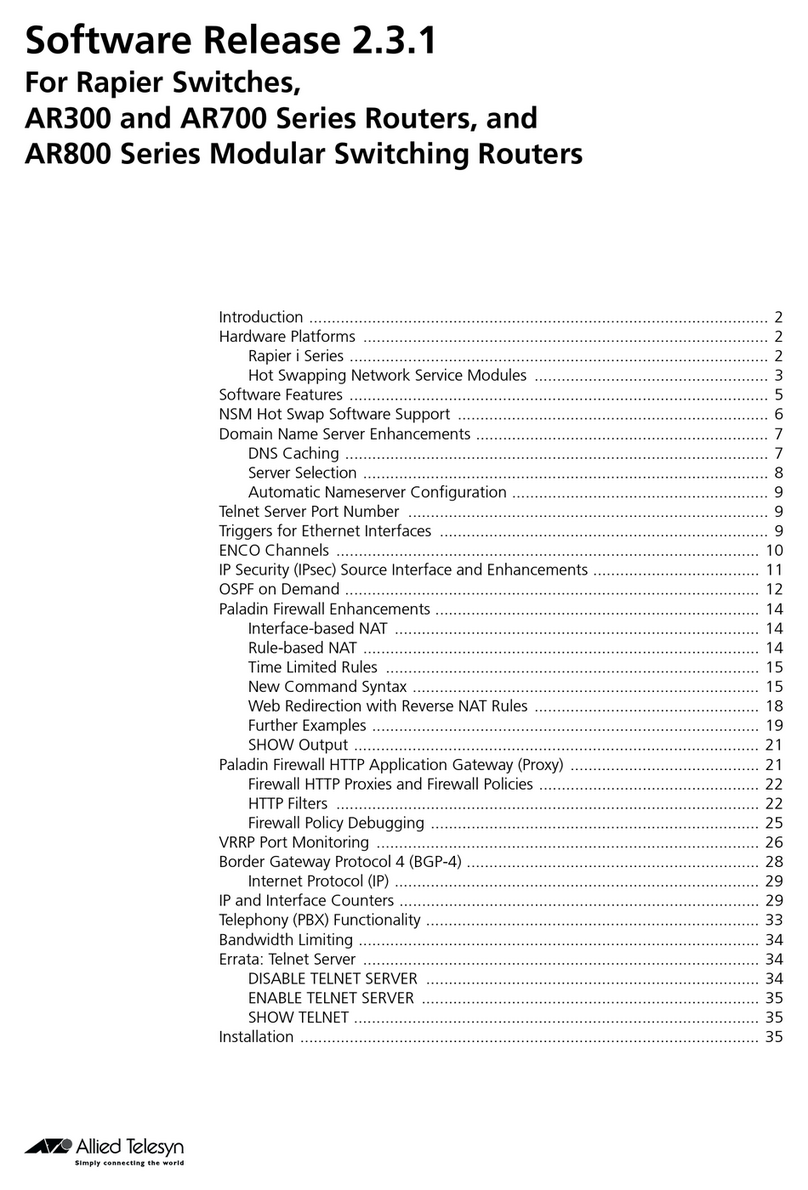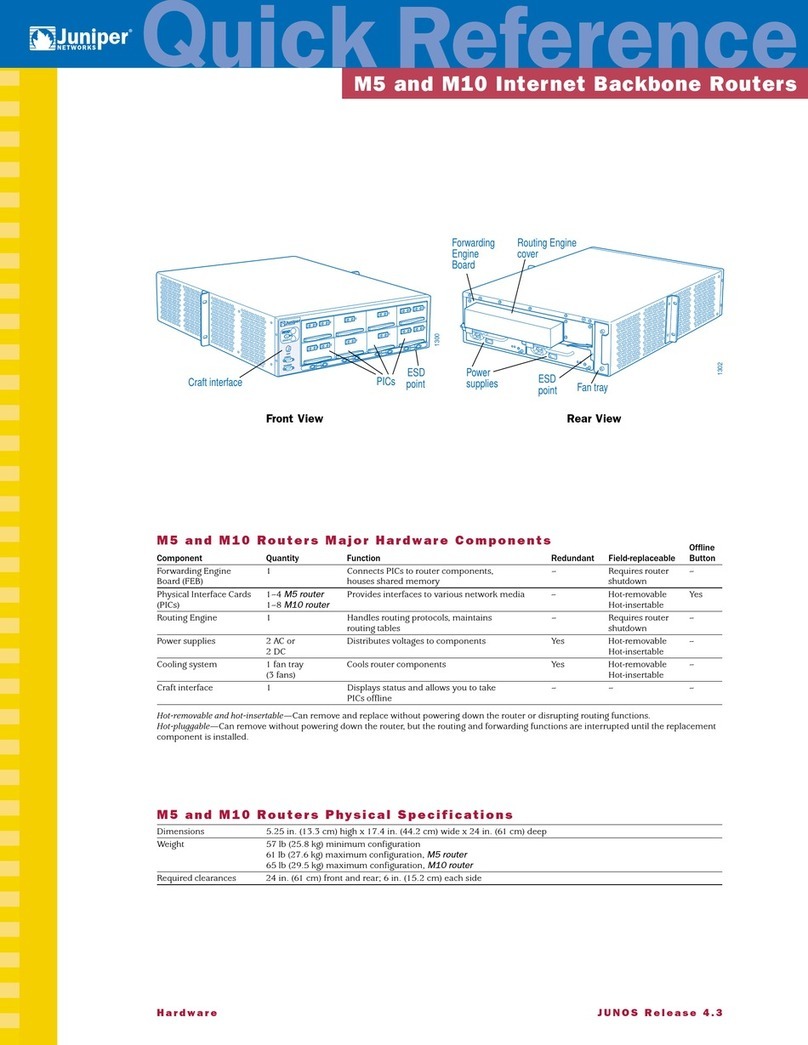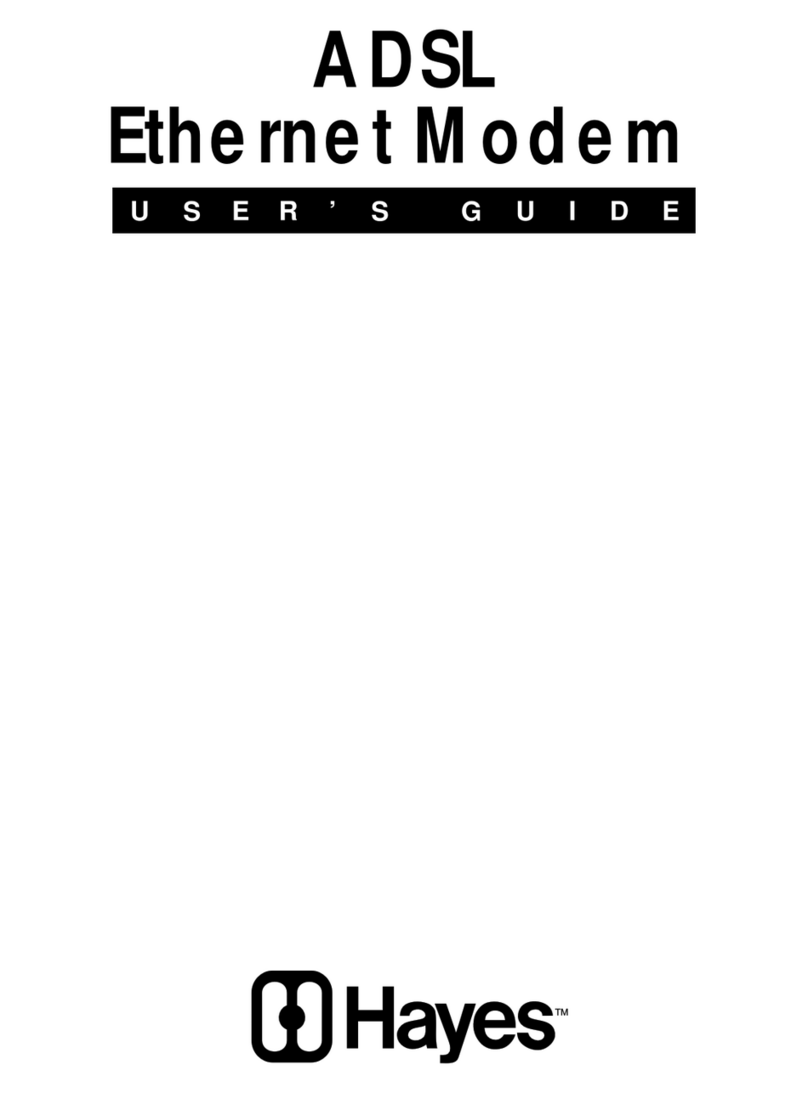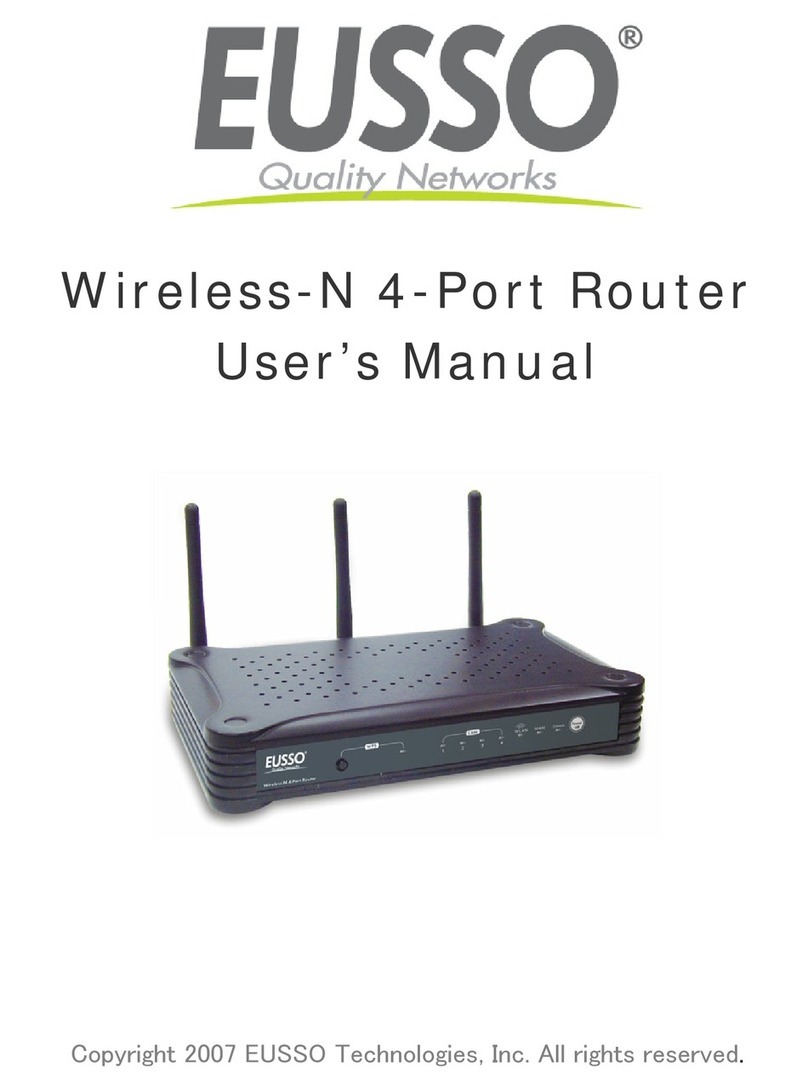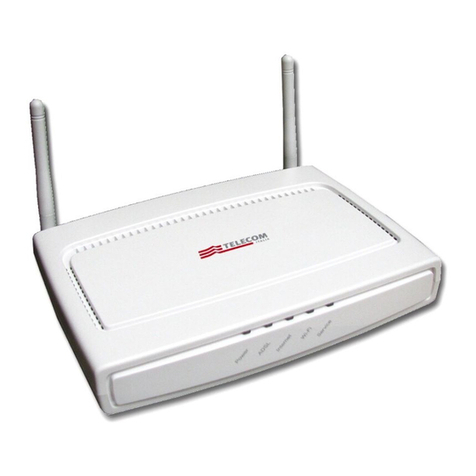INSYS MoRoS User manual

Add-On Manual
MoRoS / MLR
Reference Manual ASCII Configuration File
Nov-10


Copyright © November 10 INSYS MICROELECTRONICS GmbH
Any duplication of this manual is prohibited. All rights on this documentation and the
devices are with INSYS MICROELECTRONICS GmbH Regensburg.
Trademarks
The use of a trademark not shown below is not an indication that it is freely available for
use.
MNP is a registered trademark of Microcom Inc.
IBM PC, AT, XT are registered trademarks of International Business Machine Corporation.
INSYS ® is a registered trademark of INSYS MICROELECTRONICS GmbH.
Windows™ is a registered trademark of Microsoft Corporation.
Linux is a registered trademark of Linus Torvalds.
Publisher:
INSYS MICROELECTRONICS GmbH
Waffnergasse 8
D-93047 Regensburg, Germany
Phone: +49 (0)941/56 00 61
Fax: +49 (0)941/56 34 71
E-mail: [email protected]
Internet: http://www.insys-tec.de
Date: Nov-10
Item: 31-22-03.165
Version: 1.1
Language: EN

Contents
1General Information ........................................................................................... 5
2Version History.................................................................................................... 6
3ASCII Configuration File ...................................................................................... 7
3.1 Set-Up of the Configuration File ........................................................................................7
3.1.1 Comments............................................................................................................................7
3.1.2 Formatting ...........................................................................................................................8
3.1.3 Strings ...................................................................................................................................8
3.1.4 Endless Lists.........................................................................................................................8
3.1.5 Missing or Double Sections / Objects...........................................................................9
3.1.6 Mutually Exclusive Settings ............................................................................................9
3.1.7 Restart at the End of the Configuration.................................................................... 10
3.1.8 Reloading the Old Configuration after Configuration Aborts............................. 10
3.1.9 Including Files .................................................................................................................. 11
4Log File .............................................................................................................. 12
5Configuration Using ASCII Configuration File.................................................. 13
6Reference for the ASCII Configuration File....................................................... 14
4Nov-10

MoRoS / MLR General Information
1General Information
This add-on manual serves as reference for the configuration file of the MoRoS / MLR in
ASCII format and may only be used together with the operator manual of the respective
router. Safety instructions, technical data, and functional descriptions must be taken
from the operator manual.
This add-on manual is valid for all routers of the models MoRoS and MLR of INSYS MI-
CROELECTRONICS GmbH with a firmware version of 2.4.x or higher.
This reference describes all configuration options of the different variants of the router.
The individual variants do not contain all described settings. The actual scope depends
on firmware and variant.
5

Version History MoRoS / MLR
2Version History
Version Description
1.0 Release
1.1 Update for FW 2.5.x
6

MoRoS / MLR ASCII Configuration File
3ASCII Configuration File
The router allows to export the configuration as ASCII text file. This text file can be modi-
fied accordingly and uploaded again to the router to configure it in a convenient way.
Moreover, an "empty" configuration file (ASCII template) can be downloaded from the
router, i.e. a configuration file that contains no settings, but all setting options available
on the respective device.
A detailed description of the function for downloading and uploading configuration files
can be found in the operator manual of the router.
3.1 Set-Up of the Configuration File
The ASCII configuration file is structured in several sections. The section and object sort-
ing is based on the web interface. Each section starts with the name of the section in
square brackets "[ section ]" followed by further lines with the individual objects of
this section. Within the objects, object name and object value are separated by an equals
sign "object name = object value". Each line is finished with a carriage return. The end
of a section is defined by the start of a new section or the file end.
The configuration file is case sensitive, i.e. capitalisation is considered.
The following excerpt of an ASCII configuration file shows the section "textconfig" with
the two objects "reboot" and "abort_on_error" as well as the section "webinterface"
with further objects:
[ textconfig ]
reboot = 0
abort_on_error = 0
[ webinterface ]
local_http = 1
remote_http = 1
remote_https = 1
http_port = 80
https_port = 8888
location = 'Location' #This value has to be enclosed in single quotes
3.1.1 Comments
Comments can be introduced by a hash sign " # " at the beginning or also within a line.
A semicolon " ; " can only introduce a comment at the beginning of a line (also follow-
ing leading blanks or tabs). All other characters in the line will be ignored.
7

ASCII Configuration File MoRoS / MLR
3.1.2 Formatting
Blank lines can be inserted between any lines.
Blanks and tabs can be inserted
at the beginning of a line
at the end of a line
between square brackets and section names
between object name and " = "
between " = " and object value
between object name and " ; " for endless list entries
between " ; " and object value for endless list entries
3.1.3 Strings
Strings that are used to enter passwords or user names for example must be placed be-
tween single quotes " ’ " (a comment indicates the use of single quotes in each such
entry). The strings may also contain single quotes because only the first and last single
quote is searched for. Basically, the characters 0x20 through 0x7E are permissible, i.e. 0
through 9, a through z, A through Z, and the special characters! " # $ % & ' ( ) * + , - . / ; < =
> ? @ [ ] \ ^ _ { } | ~, as well as the blank. The colon is not permissible. The following ex-
ample shows the entry of strings:
dialnumber = '*99***1#' #This value has to be enclosed in single quotes
3.1.4 Endless Lists
Some objects can form endless lists (e.g. routes). If further objects are passed with an
object (e.g. the source address, net mask, data direction, etc. in case of a firewall rule),
these are written into the same line, but separated from each other using a semicolon
"; ". The object "list" defines, whether the endless list contained in this section that is
already stored on the router is to be deleted "list = d" (d for delete) before the new ob-
jects are entered, or the new objects are appended to the list "list = a" (a for append). If
the object "list" is missing, the objects are appended to the list. Generally, there is no
more than one endless list per section. The following example shows such an endless list:
....list = d
new_entry = common_name = cname1 ; vpn_ip = 10.1.0.9
new_entry = common_name = cname2 ; vpn_ip = 10.1.0.13
8

MoRoS / MLR ASCII Configuration File
3.1.5 Missing or Double Sections / Objects
If sections or objects are missing in an ASCII configuration file, the missing sections or
objects will not be uploaded to the router, i.e. the configuration of these objects remains
untouched. A single section is already a valid configuration file. Moreover, it must not
even contain an object, which can be used to restart a dial-out for example. Processing a
section in a configuration file corresponds with pressing the "OK" button on the respec-
tive page of the web interface.
If an ASCII configuration file contains an object more than once, the successive object
overwrites the previous one, because the configuration file is processed sequential. In
the following example, the second object overwrites the first, i.e. the object "dns" will be
set to "2.2.2.2":
[ dns ]
dns = 1.1.1.1
dns = 2.2.2.2
Sections can also occur repeatedly and are also configured repeatedly. This can be used
for example to close a dial-up connection, configure the communication device, and set-
up the dial-up connection again within one configuration, as shown in the following ex-
ample:
[ dialout ]
start_dialout = 0
[ isdn ]
msn = 25
[ dialout ]
start_dialout = 1
3.1.6 Mutually Exclusive Settings
If settings are made in an ASCII configuration file that are mutually exclusive, for exam-
ple simultaneously activating an OpenVPN client and server, the section configured first
is valid (i.e. the one that is earlier in the configuration file). However, the associated set-
tings are taken over. A comparable behaviour is also on the web interface: a conflicting
setting cannot be made after configuring a certain setting, because it will be faded out.
9

ASCII Configuration File MoRoS / MLR
3.1.7 Restart at the End of the Configuration
The section "textconfig" of the ASCII configuration file contains the object "reboot" to
define whether a restart of the router is to be made following the configuration (0 = no
restart; 1 = restart). A restart can be used to ensure that all services are started with the
new settings (VPN settings are only used following a new dial-out for example). A restart
will be made at the end of the configuration in the following example:
[ textconfig ]
reboot = 1
abort_on_error = 0
3.1.8 Reloading the Old Configuration after Configuration Aborts
The section "textconfig" of the ASCII configuration file contains the object
"abort_on_error" to define whether the old configuration is to be reloaded in case the
configuration aborts due to an error (0 = no reload of the old configuration; 1 = reload of
the old configuration). The configuration aborts in case of severely faulty configurations
that would result a red warning message in the web interface. This function can be used
for example to secure "critical" configurations (e.g. the dial-up connection that is cur-
rently used for remote configuration), by activating this function before the "critical" sec-
tion and deactivating it again behind it, i.e. the old configuration will only be reloaded, if
the abort happens in the "critical" section. The old configuration will be reloaded after an
abort in the following example:
[ textconfig ]
reboot = 0
abort_on_error = 1
10

MoRoS / MLR ASCII Configuration File
3.1.9 Including Files
It is also possible to upload the content of other files within the ASCII configuration file.
This is required to upload certificates, keys, lists, or e-mail and SSM texts for example.
These files are entered in text form as object value with the respective object. Carriage
returns may also be contained within the object with this.
In order to upload certificates or keys for example, these will be entered as object value
following the object name. For this, the certificate or key is opened in a text editor, cop-
ied there, and completely pasted behind the " = " in the object. The following (short-
ened) example shows the CA certificate in the ASCII configuration file:
[ openvpn server dialin ]
...
ca_certificate = -----BEGIN CERTIFICATE-----
MIIC+jCCAmOgAwIBAgIBATANBgkqhkiG9w0BAQUFADCBiDELMAkGA1UEBhMCREUx
...
cNAMClSZ3yDocBkiJuL7sMqAk8uN8XI4uKSBhZ0bZUG1O5dubek/Gkl2Bkymjw==
-----END CERTIFICATE-----
The entry of lists, like the AT answer list, takes place in a similar way and is shown in the
following example:
[ serial ethernet modem ]
...
at_answer_list = -----BEGIN AT ANSWER LIST-----
i="Serial Ethernet Gateway Version 1.0"
-----END AT ANSWER LIST-----
The configuration of e-mail messages takes place in form of endless lists (see Endless
Lists). The object value in form of further objects is entered here behind the object name
"new_entry" that are separated by a semicolon " ; " from each other. The message text
is then entered in the sub-object "text". This may also contain carriage returns in case for
e-mails and is enclosed by the strings "-----BEGIN MESSAGE-----" and "-----END MES-
SAGE-----". This may not contain carriage returns for SMS messages and is entered
without any further formattings. This is shown in the following example for an e-mail
message:
[ email ]
start_email = 1
list = d
new_entry = recipient = support@insys-tec.de ; cause = 0001 ; attach =
0001 ; status = 1 ; text = -----BEGIN MESSAGE-----
E-Mail-Text
will be sent on system start-----END MESSAGE-----
new_entry = recipient = support@insys-tec.de ; cause = 0002 ; attach =
0004 ; text = -----BEGIN MESSAGE-----
E-mail text
Will be sent when setting up an OpenVPN tunnel-----END MESSAGE-----
11

Log File MoRoS / MLR
4Log File
A log file is written during the configuration file is processed. Besides start and end of the
configuration, the following faults are recorded in the log file.
Unknown section
Section not available on this router (e.g. [ dialout ] on MoRoS LAN)
Missing value of an object
Unknown object
The log file can be displayed on the web interface of the router in the "System" menu on
the "System data" page using the link "Show text config log" and in the "System" menu
on the "Download" page using the link "Text Configuration Log".
A detailed description of the function for displaying the log file can be found in the op-
erator manual of the router.
12

MoRoS / MLR Configuration Using ASCII Configuration File
5Configuration Using ASCII Configuration File
This section describes how to download an ASCII configuration file from the router, edit
it accordingly, and loading it up to the router again.
Your router must be in operation and you must have access to the web interface to per-
form the following steps. It is prerequisite that you are familiar with the router and have
worked through the associated user manual, especially the sections "Commissioning"
and "Operating Principle".
Configuration with the web interface
In order to download the actual configuration of the router, right-click in the
"System" menu on the "Download" page in the "Configuration" section the
link "ASCII". Select "Save target as..." and save the configuration file to an ap-
propriate location under a suitable name.
In order to download an empty configuration file of the router, right-click in
the "System" menu on the "Download" page in the "Configuration" section the
link "ASCII template". Select "Save target as..." and save the configuration file
to an appropriate location under a suitable name.
Open the configuration file with a text editor and make the respective modi-
fications. Save the edited configuration file again.
Delete unused sections and objects to speed up the subsequent upload.
In order to upload the edited configuration to the router again, select in the
"System" menu on the "Update" page in the "Manual update" the "Browse..."
button and open the configuration file to be uploaded.
Save your settings by clicking "OK".
Confirm the upload by clicking "Yes".
Note!
Change of the time!
The time can be misadjusted by uploading a previously
downloaded configuration.
If you load a configuration from the router, the actual time is
also stored in the configuration file. If you upload this configu-
ration file without deleting or editing the [ settime ] section
again later, the time in the router will be overwritten with the
time in the configuration file (that is wrong in the meantime).
13

Reference for the ASCII Configuration File MoRoS / MLR
6Reference for the ASCII Configuration File
You will find a reference of all sections with the associated objects that can appear in the
ASCII configuration file in this section. Please note that the available sections, objects,
and options depend on the firmware and variant of the router. If you download an actual
ASCII configuration file from a router, this contains only the currently configured objects
in their respective sections, i.e. objects that exist in the router indeed, but are not config-
ured, are not contained. If you download an empty ASCII configuration file as template
from a router, this contains all available objects of this router.
Sections and objects can be deleted from or added to an ASCII configuration file. It is also
possible to create an ASCII configuration file from an empty TXT file. The requirements
for the ASCII configuration file that are described in the section "ASCII Configuration File"
of this manual must be considered with this.
[ textconfig ]
reboot 0 = No restart after configuration (default)
1 = Restart after configuration
abort_on_error 0 = No reload of the old configuration after abort (default)
1 = Reload of the old configuration after abort
[ webinterface ]
username User name for web interface access (default: insys)
The object value must be passed in single quotes!
password Password for web interface access (default: moros)
The object value must be passed in single quotes!
local_http 0 = Local configuration via HTTP disabled
1 = Local configuration via HTTP enabled (default)
remote_http 0 = Remote configuration via HTTP disabled
1 = Remote configuration via HTTP enabled (default)
remote_https 0 = Remote configuration via HTTPS disabled
1 = Remote configuration via HTTPS enabled (default)
http_port HTTP port of the web interface (default: 80)
https_port HTTPS port of the web interface (default: 443)
location Location of the router
The object value must be passed in single quotes!
[ address ]
ip IP address of the router (default: 192.168.1.1)
netmask Network mask of the router (default: 255.255.255.0)
[ routing local ]
list a = New entries are appended to existing list
d = Existing list is deleted (default)
new_entry New route entry that passes the following sub-objects:
net Network address of the static route
netmask Net mask of the static route
gateway Gateway of the static route
14

MoRoS / MLR Reference for the ASCII Configuration File
[ com1 ] for UMTS routers
pin PIN of SIM card 1
pin2 PIN of SIM card 2
provider_mode auto = Automatic log-in to standard provider of SIM
card 1
preferred = Log-in to preferred provider for SIM card 1, oth-
erwise to standard provider
exclusive = Exclusive log-in to exclusive provider for SIM card
1
pref_provider Provider ID of the preferred provider for SIM card 1
excl_provider Provider ID of the exclusive provider for SIM card 1
provider_mode2 auto = Automatic log-in to standard provider of SIM
card 2
preferred = Log-in to preferred provider for SIM card 2, oth-
erwise to standard provider
exclusive = Exclusive log-in to exclusive provider for SIM card
2
pref_provider2 Provider ID of the preferred provider for SIM card 2
excl_provider2 Provider ID of the exclusive provider for SIM card 2
auto_login 0 = Daily log-out and log-in disabled
1 = Daily log-out and log-in enabled (default)
hour_out Daily log-out at (hour; 00-23)
min_out Daily log-out at (minute; 00-59)
hour_in Daily log-in at (hour; 00-23)
min_in Daily log-in at (minute; 00-59)
[ com1 ] for ISDN routers
msn MSN of the connection to which the router is connected
caller1 Permitted caller number 1
caller2 Permitted caller number 2
caller3 Permitted caller number 3
caller4 Permitted caller number 4
caller5 Permitted caller number 5
[ com1 ] for Modem routers
country Country-specific settings of the modem (default: FD)
wait_for_dialtone 0 = Do not wait for dial tone before dialling (default)
1 = Wait for dial tone before dialling
15

Reference for the ASCII Configuration File MoRoS / MLR
[ com2 ] for redundant UMTS communication device
pin PIN of the SIM card of the redundant communication device
provider_mode auto = Automatic log-in to standard provider of SIM
card 1
preferred = Log-in to preferred provider for SIM card 1, oth-
erwise to standard provider
exclusive = Exclusive log-in to exclusive provider for SIM card
1
pref_provider Provider ID of the preferred provider for SIM card 1
excl_provider Provider ID of the exclusive provider for SIM card 1
auto_login 0 = Daily log-out and log-in disabled
1 = Daily log-out and log-in enabled (default)
hour_out Daily log-out at (hour; 00-23)
min_out Daily log-out at (minute; 00-59)
hour_in Daily log-in at (hour; 00-23)
min_in Daily log-in at (minute; 00-59)
[ com2 ] for redundant ISDN communication device
msn MSN of the connection to which the redundant communica-
tion device is connected
caller1 Permitted caller number 1
caller2 Permitted caller number 2
caller3 Permitted caller number 3
caller4 Permitted caller number 4
caller5 Permitted caller number 5
[ com2 ] for redundant Modem communication device
country Country-specific settings of the modem (default: FD)
wait_for_dialtone 0 = Do not wait for dial tone before dialling (default)
1 = Wait for dial tone before dialling
[ terminal1 ] not for LAN routers
command AT command that is passed to the communication device
[ terminal2 ] for redundant communication device
command AT command that is passed to the redundant communication
device
16

MoRoS / MLR Reference for the ASCII Configuration File
[ dialin ]
start_dialin 0 = Dial-in disabled (default)
1 = Dial-in using internal communication device
2 = Dial-in using redundant communication device
3 = Dial-in using internal or redundant communication device
idletime Idle time in seconds after which a dial-in connection without
data traffic is disconnected (default: 0, no disconnection)
dialin_prio 0 = Do not prioritise dial-in over LAN (ext) (default)
1 = Prioritise dial-in over LAN (ext)
rings Number of ring tones until call acceptance
authentication 0 = Authentication for dial-in disabled
1 = Authentication for dial-in enabled (default)
username<x> User name for authentication account <x> (<x> = 0-9)
The object value must be passed in single quotes!
password<x> Password for authentication account <x> (<x> = 0-9)
The object value must be passed in single quotes!
auth<x> pap = Authentication for authentication account <x> via PAP
chap = Authentication for authentication account <x> via
CHAP
callback<x> 0 = Call-back for authentication account <x> disabled (de-
fault)
1 = Call-back for authentication account <x> enabled
ip_local_intern Own IP address
ip_remote_intern IP address of remote terminal
ip_local_extern Own IP address of the redundant communication device
ip_remote_extern IP address of remote terminal of the red. communication
device
callback 0 = Automatic call-back disabled (default)
1 = Automatic call-back enabled
for ISDN or Modem routers
callback_mode auth = Call-back after PPP authentication
clip = Call-back after call from one of the specified numbers:
clip1 Phone number 1 for which a call-back is made
clip2 Phone number 2 for which a call-back is made
clip3 Phone number 3 for which a call-back is made
clip4 Phone number 4 for which a call-back is made
clip5 Phone number 5 for which a call-back is made
17

Reference for the ASCII Configuration File MoRoS / MLR
[ routing dialin ]
default_route 0 = Set no default route
1 = Set default route (default)
nat_incoming 0 = NAT for incoming packets disabled
1 = NAT for incoming packets enabled (default)
nat_outgoing 0 = NAT for outgoing packets disabled
1 = NAT for outgoing packets enabled (default)
list a = New entries are appended to existing list
d = Existing list is deleted (default)
new_entry New route entry that passes the following sub-objects:
net Network address of the route
netmask Net mask of the route
gateway Gateway of the route (only for LAN routers)
[ firewall dialin ]
start_firewall 0 = Firewall for dial-in connections disabled (default)
1 = Firewall for dial-in connections enabled
list a = New entries are appended to existing list
d = Existing list is deleted (default)
new_entry New permitted connection that passes the following sub-
objects:
protocol icmp = ICMP protocol is used
udp = UDP protocol is used
tcp = TCP protocol is used
direction in = Only incoming connections are permitted
out = Only outgoing connections are permitted
both = Incoming and outgoing connections are permitted
source_ip Source IP address
source_netmask Source net mask
dest_port Destination port
dest_ip Destination IP address
dest_netmask Destination net mask
dialinuser Name of the user that has dialled in
The object value must be passed in single quotes!
18

MoRoS / MLR Reference for the ASCII Configuration File
[ openvpn server dialin ]
start_openvpn_server 0 = OpenVPN server for dial-in connections disabled (default)
1 = OpenVPN server for dial-in connections enabled
lport Local port of the tunnel (default: 1194)
rport Remote port of the tunnel (default: 1194)
protocol udp = UDP protocol is used
tcp = TCP protocol is used
float 0 = Float (remote terminal may change its IP address) dis-
abled
1 = Float (remote terminal may change its IP address) enabled
(default)
comp_lzo 0 = LZO compression disabled
1 = LZO compression enabled (default)
masquerade 0 = Do not mask packets before tunnelling
1 = Mask packets before tunnelling (default)
cipher BF-CBC = Encryption algorithm Blowfish 128 Bit (de-
fault)
DES-CBC = Encryption algorithm DES 64 Bit
DES-EDE-CBC = Encryption algorithm DES EDE 128 Bit
DES-EDE3-CBC = Encryption algorithm DES EDE3 192 Bit
DESX-CBC = Encryption algorithm DESX 192 Bit
CAST5-CBC = Encryption algorithm CAST5 128 Bit
IDEA-CBC = Encryption algorithm IDEA 128 Bit
RC2-CBC = Encryption algorithm RC2 128 Bit
RC2-40-CBC = Encryption algorithm RC2 40 Bit
RC2-64-CBC = Encryption algorithm RC2 64 Bit
AES-128-CBC = Encryption algorithm AES 128 Bit
AES-192-CBC = Encryption algorithm AES 192 Bit
AES-256-CBC = Encryption algorithm AES 256 Bit
verb Verbosity of the messages in connection log (default: 3, 0-9)
fragment Maximum size of the tunnel packets (in bytes)
reneg Interval for key renegotiation (in seconds, default: 3600)
ping Interval for ping dispatch to remote terminal (in seconds,
default: 30)
restart Interval for ping restart (in seconds, default: 60)
client_to_client 0 = Do not allow communication between clients (default)
1 = Allow communication between clients
pool_ip IP address pool for clients
pool_netmask Net mask of the IP address pool
list a = New entries are appended to existing list
d = Existing list is deleted (default)
auth_type static = No authentication or with static key
cert = Authentication with certificates
remote_peer IP address or domain name of remote site
remote_peer2 IP address or domain name of alternative remote site
local_vpn_ip Local IP address of VPN tunnel
remote_vpn_ip Remote IP address of VPN tunnel
remote_net Address of network behind the VPN tunnel
remote_netmask Net mask of network behind the VPN tunnel
new_entry New route entry to client network that passes the following
sub-objects:
19

Reference for the ASCII Configuration File MoRoS / MLR
common_name "Common Name" in certificate of the client
net Network address of the client
netmask Net mask of the client
vpn_ip VPN IP address of the client
dh_parameters Diffie-Hellman parameter set
crl Certificate Revocation List
ca_certificate CA certificate
public_certificate Public certificate of the server
private_key Private key of the server
static_key Static key
[ openvpn client dialin ]
start_openvpn_client 0 = OpenVPN client for dial-in connections disabled (default)
1 = OpenVPN client for dial-in connections enabled
lport Local port of the tunnel (default: 1194)
rport Remote port of the tunnel (default: 1194)
protocol udp = UDP protocol is used
tcp = TCP protocol is used
float 0 = Float (remote terminal may change its IP address) dis-
abled
1 = Float (remote terminal may change its IP address) enabled
(default)
comp_lzo 0 = LZO compression disabled
1 = LZO compression enabled (default)
masquerade 0 = Do not mask packets before tunnelling
1 = Mask packets before tunnelling (default)
cipher BF-CBC = Encryption algorithm Blowfish 128 Bit (de-
fault)
DES-CBC = Encryption algorithm DES 64 Bit
DES-EDE-CBC = Encryption algorithm DES EDE 128 Bit
DES-EDE3-CBC = Encryption algorithm DES EDE3 192 Bit
DESX-CBC = Encryption algorithm DESX 192 Bit
CAST5-CBC = Encryption algorithm CAST5 128 Bit
IDEA-CBC = Encryption algorithm IDEA 128 Bit
RC2-CBC = Encryption algorithm RC2 128 Bit
RC2-40-CBC = Encryption algorithm RC2 40 Bit
RC2-64-CBC = Encryption algorithm RC2 64 Bit
AES-128-CBC = Encryption algorithm AES 128 Bit
AES-192-CBC = Encryption algorithm AES 192 Bit
AES-256-CBC = Encryption algorithm AES 256 Bit
verb Verbosity of the messages in connection log (default: 3, 0-9)
fragment Maximum size of the tunnel packets (in bytes)
reneg Interval for key renegotiation (in seconds, default: 3600)
ping Interval for ping dispatch to remote terminal (in seconds,
default: 30)
restart Interval for ping restart (in seconds, default: 60)
bind 0 = No-bind (fix local address and port) disabled
1 = No-bind (fix local address and port) enabled (default)
icmp_ping IP address or domain name for additional ICMP ping
20
Other manuals for MoRoS
3
This manual suits for next models
1
Table of contents
Other INSYS Network Router manuals
